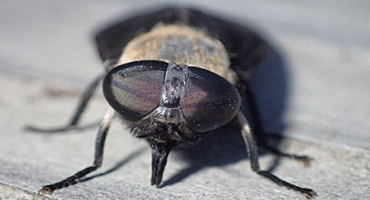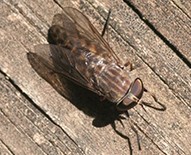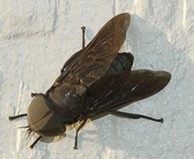By Patrick Wagner, Amanda Bachmann and Adam Varenhorst

Horse Fly Activity
As we progress later into the summer, we commonly see an increase in horse fly activity. These large flies can be found throughout South Dakota; however, they are typically more of an issue in the Southern and Eastern portions of the state. Horse flies have the ability to inflict a very painful bite and draw large amounts of blood. If present in high populations, they can become a significant pest of pastured livestock, primarily cattle and horses.
Identification
Horse flies can be easily identified by their large size compared to other common fly pests such as stable flies or horn flies. Most species are approximately ½ of an inch to 1 ¼ inches in length. Horse flies have a robust body that is usually covered with small hairs. They have a pair of large compound eyes on the head and prominent mouthparts that extend downward (Figure 1). Horse flies vary in color, with many being black, grey, or brown and some having patterns of blue, green, or yellow. Most species are multicolored with stripes on the abdomen and thorax (Figure 2). Horse flies can also be uniformly colored, including the eyes and wings (Figure 3).

